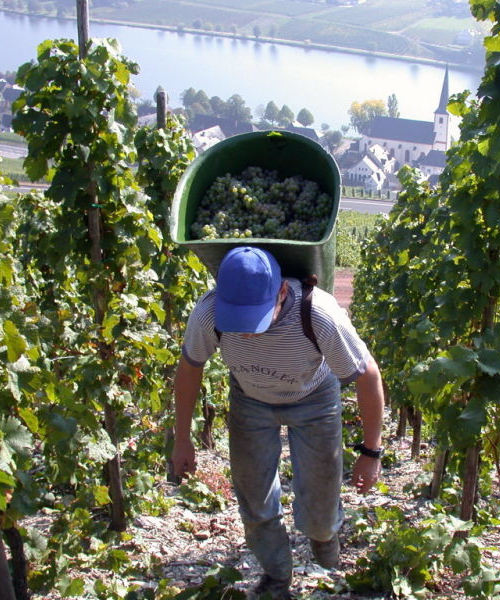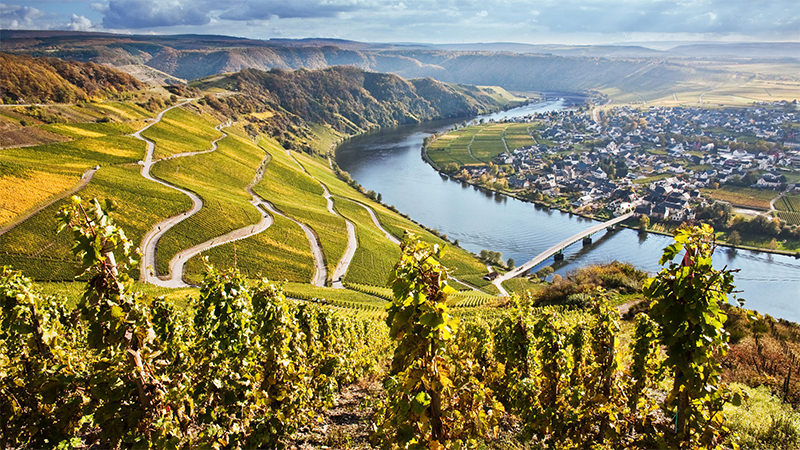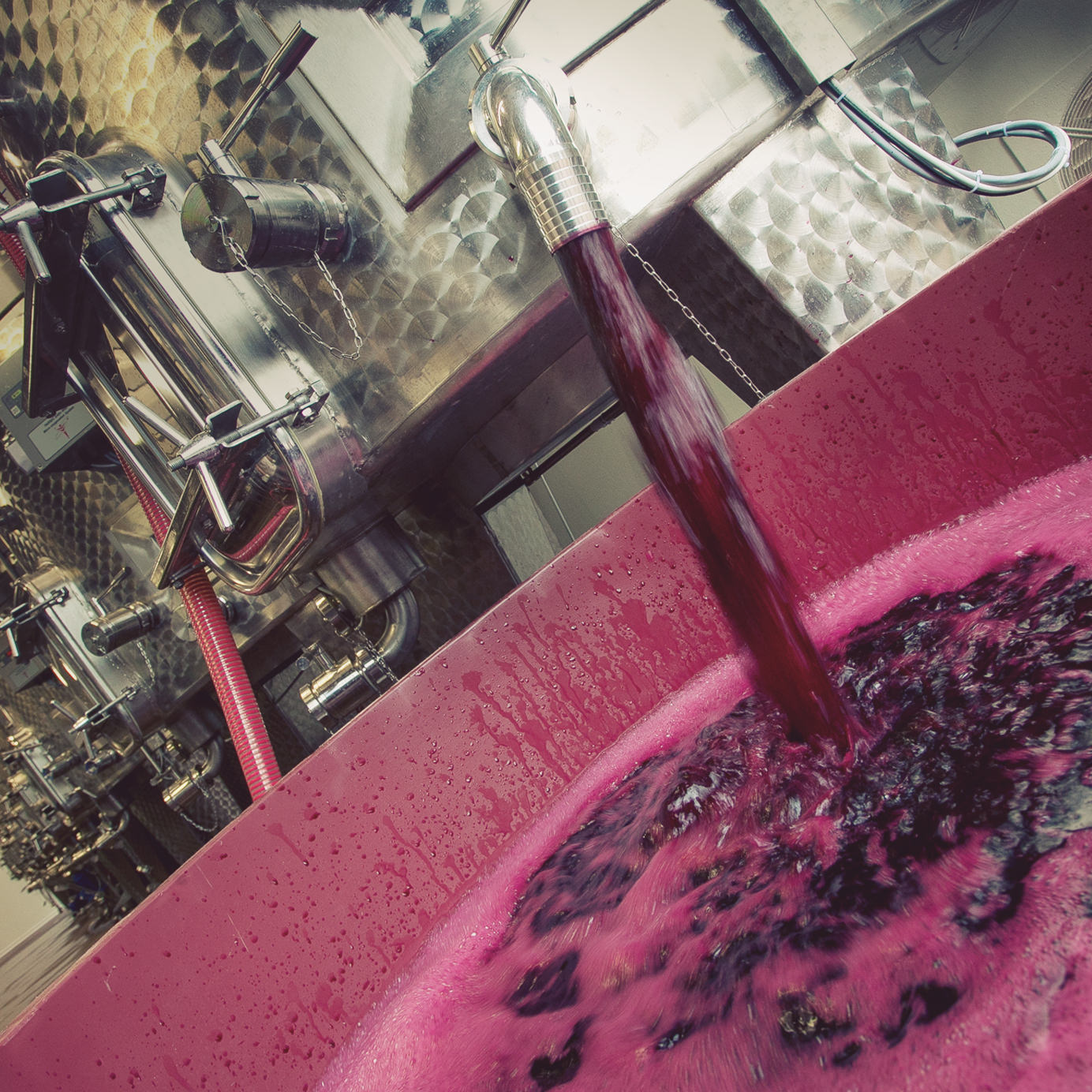It was dim, quiet, and cool in the subterranean cellar, a refreshing change from the blazing sun glinting off the Mosel River outside. We walked slowly through never-ending rows of tanks, our footsteps clicking along gleaming cement floors.
Instead of flickering candles, fluorescent beams lit our path. Glistening metal lined the walls, and not an inch of mold grew on the tanks or barrels piled high above us. It was the largest winery I’d ever visited, and I’d only seen one tank room.
Welcome to the Moselland Cooperative, a gargantuan operation in Germany’s southwestern Mosel Valley. It’s a Costco-sized building that reads more factory than mold-covered stone cellar, but it’s more than just a case for modern convenience.
This is one of the few places where big brands and large-scale production don’t mean bad wine. When one building can produce wines that taste great, support a wide range of local farmers, and offer bottles from $10 to $50, it’s got my attention — and it deserves yours.
Size Matters
Some people might scoff when I call a place like Moselland Cooperative a winery, replying with elitist, wine-biz insults like “chemical factory,” “machine,” or “unnatural.” But the Moselland Cooperative is a winery, albeit a huge contrast from the norm in Mosel. The region is primarily home to tiny estates widely renowned for Rieslings.
The co-op, on the other hand, stocks everything from familiar American brands like Clean Slate Riesling and Flower Garden Pinot Grigio, as well as traditional and high-end German wines like Moselland Feinherb Riesling and Zeltinger Schlossberg Auslese.
Their cellar doesn’t hold old barrels; after all, it holds enough bottles to give one to every German alive. (Roughly 82 million, if you’re curious.) Bottles range from slender blue glass with family crests to multicolored, cat-shaped vessels designed more for Instagram than connoisseurship.
Empowering Wine Growers and Drinkers
The co-op functions like most in Europe. Membership spans growers with anything from small plots to large vineyards. They trade grapes for a portion of the co-op’s proceeds, and rates are determined by the quality of their fruit and its specific subregion.
Historically, co-ops were instrumental in allowing small growers and vintners across Europe to produce wine commercially and exist in almost every wine region. Generally, they emerged as a way for communities to share equipment, resources, and large costs across the group. Often, combining small vineyards was the only way to make commercially viable wine, leading villages and groups of villages to sell their blended ones together.

Moselland worked off that basic structure and has now united several regions across Germany, including the Nahe and Rheinhessen, to enable small growers (everyone from hobbyist grandparents to full-time farmers) to sell their grapes. Additionally, unlike the average co-op, however, Moselland gives their grape growers the flexibility to sell all or just some of their production to the group. If farmers want to make a few barrels for their own consumption, or even to sell locally, that’s within co-op bounds.
At harvest, vintners ship their grapes or grape juice to the facility, where everything is crushed, blended and fermented. Eventually, all are sorted into lots based on their final destination, be they Clean Slate or novelty bottles.
What Wine is All About
At heart, this co-op is doing great things for local farmers and global drinkers. Never mind what small production devotees will tell you, and hear me out.
First, Moselland gives exceptional vintners without the capital to form their own winery a way to make a living. It provides a direct channel to markets at home and abroad. Vintners are paid based on the quality level of their grapes, so many adopt best practices like low-intervention farming.
Secondly, Moselland’s giant tanks make enjoying great German wine a possibility for millions of Americans who can’t splurge on $30 bottles over and over again until they find the right one for their palates. Inexpensive, entry-level wines keep the entire business afloat and, moreover, make millions of drinkers happy. That’s what wine is all about: drinkable pleasure with a sense of a place. Moselland makes that possible every day.
It’s true that large-production facilities like Moselland aren’t making funky, unfiltered wines or using native yeasts, but that makes them more closely resemble most producers in Germany and worldwide. They aren’t sacrificing quality or using Wonder Bread-esque chemicals to make cheap swill — they’re using some of the world’s best Riesling grapes to make wine for everyone.

If it weren’t for this facility, many drinkers this side of the Mosel wouldn’t discover Riesling and other German varieties. And I am of the mindset that all drinkers deserve the chance to sample great wines without a great investment.
Personally, I will continue to support wineries that make quality wine available to everyone who wants it. I don’t care if it entails ancient cellars, high-tech factory equipment, or cat-shaped bottles.
